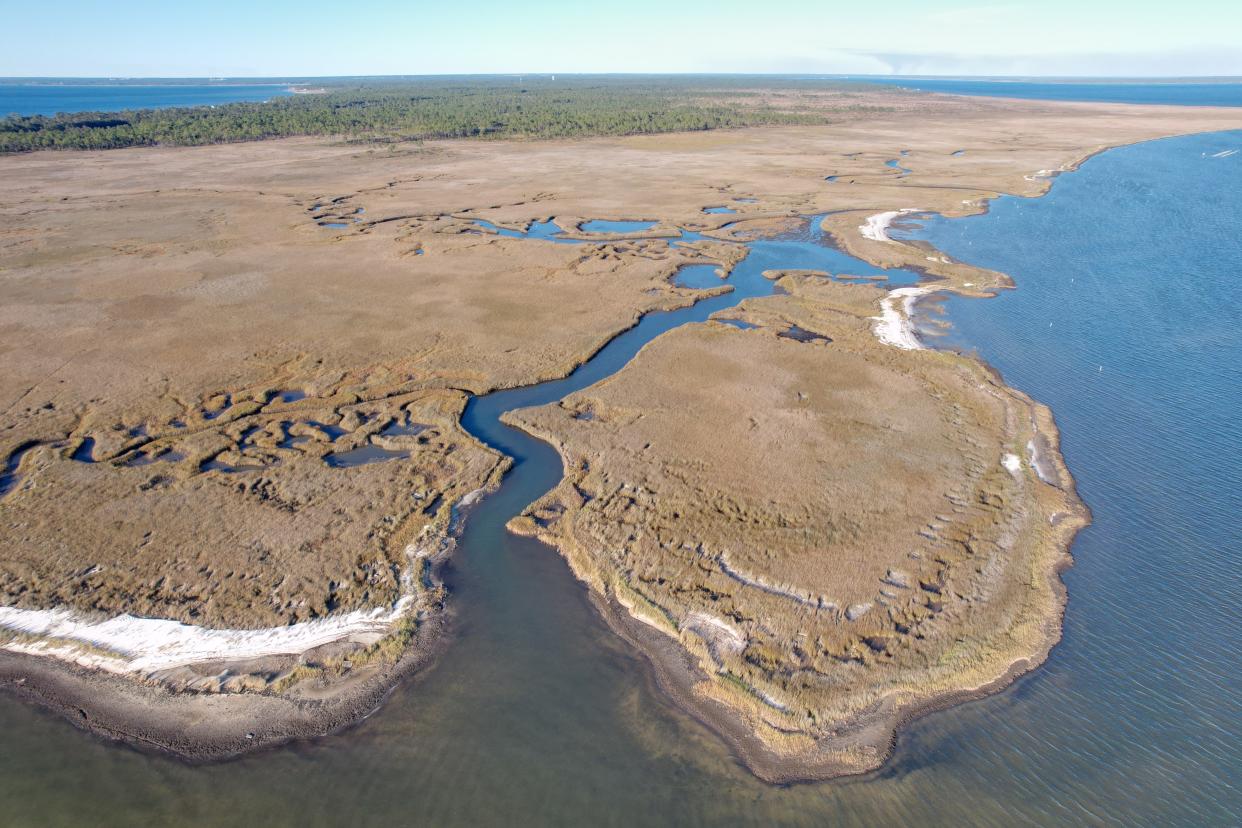See the plan to clean up our waterways and learn how we can get funds to make it happen

Editor's note: This story has been updated to correct a mistake that appeared in the original. The name of the report that will be released this fall is the "State of the Bays Report Card."
The region hit a major milestone last week that could help unlock federal funding to improve water quality.
The Pensacola and Perdido Bays Estuary Program recently published a draft comprehensive management plan. The 208-page document will be the guiding document for the program as it moves forward, estuary program Executive Director Matt Posner told the News Journal.
"The whole goal (of this plan) is that this serves as our marching orders, if you will, for the next the next 10 years," Posner said.
The program is a descendant of the Bay Area Resource Council, which has worked to raise public awareness of environmental and water quality issues since the 1980s. Following the 2010 oil spill, the council and Escambia County sought to bring more resources to the program, and in 2017 the U.S. Environmental Protection Agency awarded a $2 million grant to create the Pensacola and Perdido Bays Estuary Program.
CivicCon: The sea will rise 12 inches by 2050. Here's what we can do to get ready
Oyster mecca: Could Pensacola become a mecca for oyster farmers? A group is working to make it happen
The grant was officially presented and the program began in 2018.
The estuary program is a partnership overseen by nine local governments in Escambia and Santa Rosa counties, as well as Baldwin County, Alabama. The watershed itself covers more than 13,000 square miles, touching 12 Alabama counties and four Florida counties.
The draft Comprehensive Conservation and Management Plan was a major goal of the 2017 EPA grant and is a necessary step to receiving recognition from the federal government as a national estuary program.
Since Congress created the National Estuary Program designation in 1987, only 28 programs have received recognition from the EPA. The Pensacola and Perdido Bays Estuary Program is aiming to be the 29th. No new programs have been recognized in more than two decades.
If recognized, the program could unlock millions more in funding for the region. For example, the Infrastructure Investment and Jobs Act passed last year set aside $132 million for the National Estuary Program that will be equally divided among the 28 programs over the next five years, according to a public memo from an EPA assistant administrator published on July 26.
2021 Grants: Estuary Program announces $250,000 available through Community Grant Program
"It's always been the objective to reach that national designation, but that takes a literal act of Congress," Posner said. "So we're very fortunate that last year, Sen. (Marco) Rubio, with the support of Sen. (Rick) Scott, filed legislation to have Pensacola and Perdido designated as that 29th National Estuary Program."
Posner recently traveled with Pensacola Mayor Grover Robinson to Washington, D.C., to meet with members of Congress from Florida and Alabama to ask for support for the program.
The plan states the estuary program has six goals: be a source of information on the watershed, strengthen community resilience to storms, improve water quality, reduce sedimentation, conserve and restore critical habitat, and restore and conserve fish and wildlife.
The plan goes on to list numerous objectives and actions the program should take to accomplish those goals.
The projects envisioned by the estuary program could be for things people may not first associate with water quality such as paving dirt roads in rural areas.
Posner said in order to obtain a healthy bay system with good water quality, healthy seagrass beds and thriving oyster reefs, the program has to look at the entire watershed.
Helping get funding for road paving projects or stream restoration or septic-to-sewer conversions are all part of what the estuary program can do.
"(The plan) really does look at trying to identify those priority efforts that are going to give the best bang for the buck, in terms of not only the project value itself, but actually realizing those water quality improvements," Posner said.
The estuary program is seeking public comments on its draft Comprehensive Conservation and Management Plan between now and Aug. 28 on its website ppbep.org.
The estuary program will make changes to the plan based on public comments, then the plan will have to be approved by the program's policy board. Posner said they would also seek a resolution of support for the plan directly from all nine local governments that make it up.
"Moving forward, the public can expect to see an annual progress report from the estuary program on where we stand on achieving those actions," Posner said. "Later this fall, we'll be releasing the first ever State of the Bays Report Card that will serve as a public-facing dashboard for the conditions of our watersheds."
Jim Little can be reached at jwlittle@pnj.com and 850-208-9827.
This article originally appeared on Pensacola News Journal: Escambia County Estuary program wants public feedback on watershed plan

